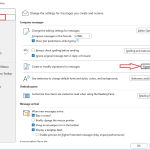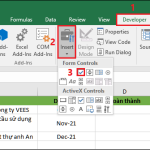5-Step Guide to Creating an Effective Employee Training Program
As the talent market grows increasingly competitive, businesses all over the world are working hard on employee retention and remediating the effects of high turnover.
To achieve increased employee engagement and retention, companies are focusing on developing skills and infrastructure to support ongoing learning. The World Economic Forum reported that 94% of business leaders expected their employees to learn new skills via training courses and learning initiatives.
If implemented effectively, employee training programs can increase productivity and efficiency for an organization while reducing costs. An effective employee training program will result in a more engaged and compliant staff, and it may also reduce staff turnover.
Training programs for employees can cover everything from onboarding new hires to addressing general topics or specialized skills for existing employees. There is no one-size-fits-all approach to training employees, but there are certain elements that are consistently present in businesses with excellent training programs.
This 5-step guide will help you develop an effective training program that will elevate learning and development in your company.
Set Objectives and Define Your Strategy
When looking to build an employee training program successfully, you should set measurable and clear goals. If you want to improve employee performance, for example, you could measure team efficiency both before and after the employees learn how to use new tools. After you determine your goals, you can choose a strategy to implement your training and development program.
To help you create a thoughtful strategy, ask yourself the following questions: Are you able to train your employees in-house, or will you need to outsource? Should you invest in online training software to better organize your training material? Do you think your employees will benefit more from classroom or workshop training? Should you send employees to conferences or internal seminars for training?
Identify Skills Gaps and Future Trends
As the adoption of technology increases, it is expected that 50% of all employees will need reskilling by 2025. Moreover, many companies are experiencing a shortage of skilled employees who can use new tools and technologies.
Before creating your training program, identify the skill gaps in your organization. This will help you eliminate these threats and create a more efficient and targeted training program. You can do this by using the data that is available to you, such as employee resumes, profiles, and training data.
Next, you need to identify and understand the future trends and skills that are relevant to your business. Look at what roles and skills will be more important in your industry and which ones will become less relevant. Also, see what skills leading companies in your industry are looking for.
This way, you can compare the available skill landscape to the target job profile and identify the skill gap. You can then use the data to create a training program that closes skill gaps and develops your workforce efficiently.
Invest in the Right Resources
Identify the resources that you’ll need to deliver training effectively once you have your plan. You need competent instructors who can lead training sessions, but you also need a strong learning culture and the right technology.
Make a list of all the resources you currently have at your disposal and the resources you might need for your employee training program. This list could include:
- Learning platforms and knowledge databases
- Trainers, coaches, or mentors
- Workbooks, videos, or websites are all examples of training materials.
The most important thing to keep in mind here is to use training materials based on your specific business needs.
Monitor Performance and Success
It’s a lot easier to develop a successful employee training program when you know what works and what doesn’t. Monitor the performance of both new and existing training courses to increase your chances of success. This includes completion rates, participation rates, and trends between course and employee performance.
Some courses may not be performing well in certain areas but can be improved to increase engagement or enrollment numbers. Some courses are simply unsuccessful and have little impact on the performance of employees, so they should be eliminated. The successful courses can be used as a model for future training programs.
Review and Evaluate
Onboarding, upskilling, and reskilling are ongoing processes. Keep reviewing the results of your training activities based on employee and business performance. Do not be afraid to alter your strategy if you feel it isn’t working.
Workplace analysis and tracking performance are both very useful. With powerful training software, you can spot trends and track ongoing performance to make data-driven decisions.
Final Words
The benefits of an employee training program go beyond enhanced employee productivity. This kind of investment will also increase employee engagement and loyalty. There are many different ways to create a new process for training. However, before you start, consider the specific needs of your employees and follow the steps outlined above to ensure that the program is successful.








